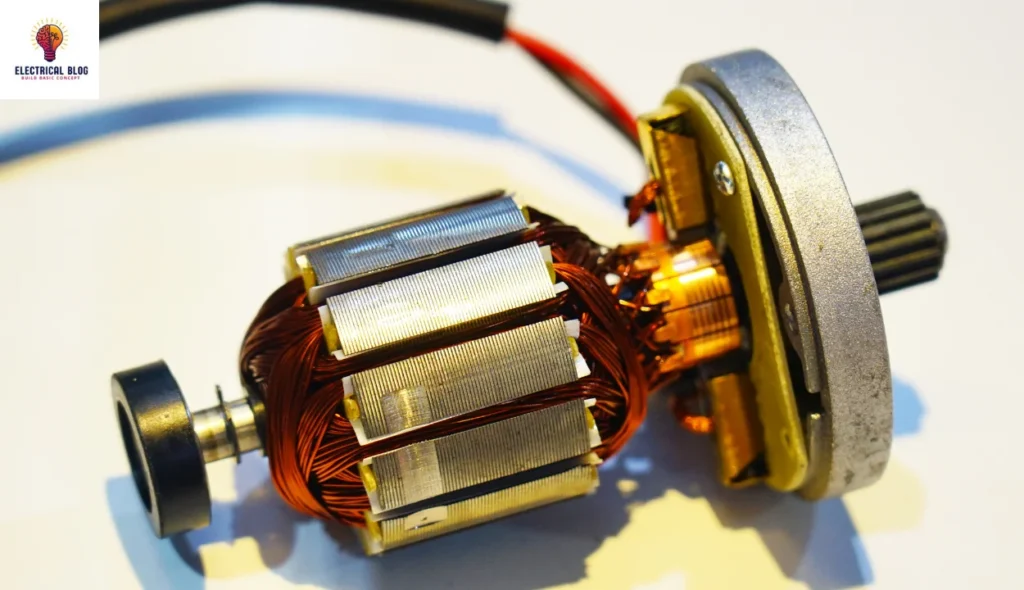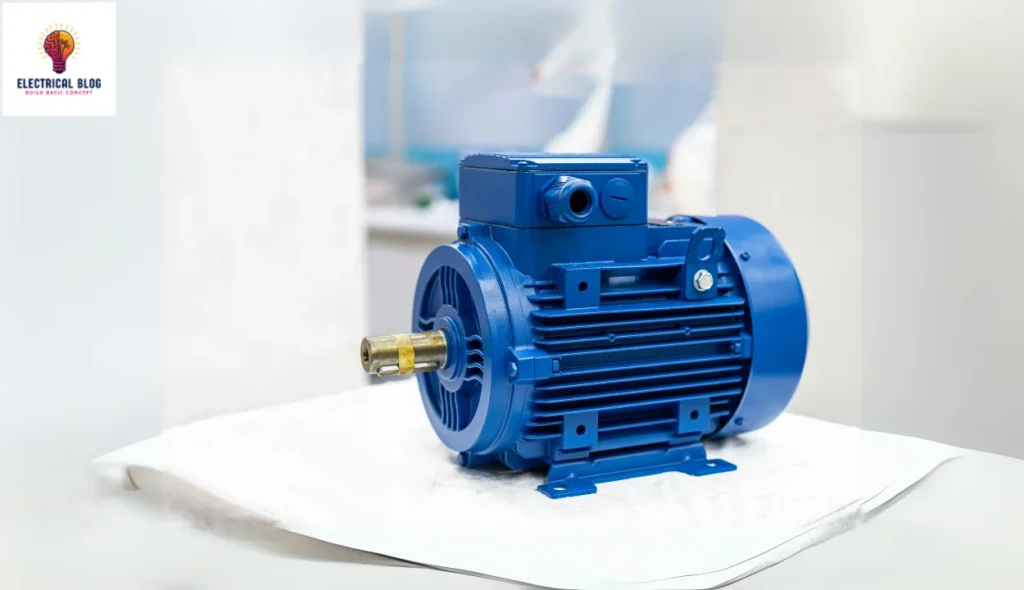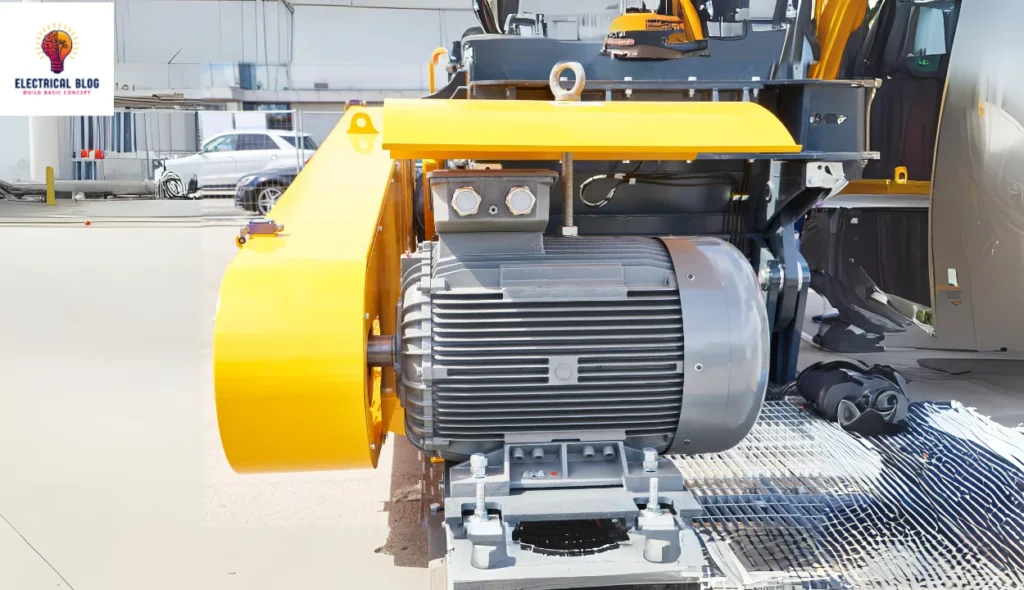Introduction
Permanent magnet motors (PMMs) are now essential in electrical engineering. They are used in cars and industries. These compact powerhouses use magnetic fields from fixed magnets. They are very efficient and reliable. Their widespread adoption across sectors underscores their crucial role in modern technology. This eliminates the need for external field excitation. This article explores permanent magnet motors in detail. It covers their types, materials, and their growing use in various applications.
What is a Permanent Magnet Motor?
A permanent magnet motor is a type of electric motor that relies on permanent magnets for excitation. These magnets can be stationary or rotating, positioned either interior or exterior to the armature, depending on the design. In some models, magnets are layered with the wound armature for an axial flux topology or set outside for a radial flux machine.
I once worked on a schematic for a small project involving toy slot cars where a brushed armature design was commonly used. This design shows how efficient these motors can be when correctly used in compact systems requiring precise control. Their flexible structure makes them ideal for various applications, blending functionality with innovative engineering. You can also read Universal Motor.
Working Principle of Permanent Magnet Motors
The permanent magnet motor operates using permanent magnets that create a stable magnetic field for motor rotation. When current flows through the wound armature, it interacts with this field, causing motion. Depending on the design, the magnets may be stationary or rotating, positioned either internally or externally to the armature for efficient energy transfer.
In some designs, layered magnets in an axial flux topology improve torque, while placing them outside in a radial flux machine enhances stability. Systems like toy slot cars often feature a brushed armature design, commonly used for small-scale projects. This flexible motor shows exceptional efficiency in various applications.
Permanent Magnet Motor diagram
Structure of Permanent Magnet Motors
The structure of a permanent magnet motor includes a wound armature, permanent magnets, and a stable magnetic field for operation. The magnets can be stationary or rotating, placed interior or exterior to the armature based on design needs. Some models feature layered magnets in an axial flux topology, while others place magnets outside in a radial flux machine for enhanced stability.
A schematic design shows these configurations, often optimized for efficiency. In systems like toy slot cars, a brushed armature design is commonly used, proving practical for small-scale applications. This adaptable type offers flexibility for various engineering solutions.
The structure of a permanent magnet motor includes a wound armature, permanent magnets, and a stable magnetic field for operation. The magnets can be stationary or rotating, placed interior or exterior to the armature based on design needs. Some models feature layered magnets in an axial flux topology, while others place magnets outside in a radial flux machine for enhanced stability.
A schematic design shows these configurations, often optimized for efficiency. In systems like toy slot cars, a brushed armature design is commonly used, proving practical for small-scale applications. This adaptable type offers flexibility for various engineering solutions.
Types of Permanent Magnet Motors
There are two main types of permanent magnet motors.
Permanent magnet DC motors
Permanent magnet DC motors powered by direct current and permanent-magnet synchronous motors that run on alternating current. Among these, surface permanent magnet motors (SPM) place magnets on the outside of the rotor, while IPM motors position magnets inside the motor for better structural integrity.
From experience, I’ve seen that placing magnets inside the rotor in IPM designs can help reduce back EMF. Cutting holes in the rotor for placement creates areas of high reluctance, giving carmakers the added benefit of combining reluctance motors with permanent magnet motors for improved performance.
Back Electromotive Force
Back electromotive force (EMF) is a voltage generated in electric motors due to the relative motion between the rotor and stator windings. In permanent magnet motors, a constant field is maintained, causing the voltage to increase linearly with speed, creating a negative impact on the overall system.
Unlike permanent magnet motors, induction motors experience a decrease in magnetic field strength as speed rises. The geometry and shape of the rotor influence the waveform of the induced voltage. This effect, also known as counter-electromotive force, results in loss when power is supplied to the motor.
Permanent Magnetic Motor Materials
Permanent magnetic materials are crucial for permanent magnetic motors as they drive performance based on magnetic strength and cost. Common materials like neodymium iron boron (NdFeB) and samarium cobalt (SmCo) are widely found in the vast majority of industrial applications due to their strong magnetic properties.
Materials such as aluminum, nickel, cobalt (Alnico), and strontium carbonate-iron oxide (or ceramic magnet) are also popular choices. Recent materials science research focuses on the ongoing development of additional non-rare earth (NRE) options to reduce reliance on expensive resources while ensuring significant performance improvements.
NdFeB Magnets
NdFeB is the strongest of all permanent magnet materials, widely used in industrial applications like electric vehicle motors, power tools, and electricity generators. It also powers devices such as disc drive spindle motors, alternators, and sensors, providing excellent performance due to its strong magnetic behavior.
This material is produced by sintering alloyed neodymium, iron, and boron, forming the Nd2Fe14B phase with high coercivity and energy product. While efficient, NdFeB faces corrosion vulnerability along sintered grain boundaries, requiring copper-nickel or aluminum-based metallic surface coatings. The Curie temperature is around 320 °C, but its rarity, cost, and radioactive waste make it both financially and environmentally expensive.

SmCo Magnets
SmCo is a strong permanent magnet. Its strength is similar to NdFeB. This material is often used in high-performance systems. You can find it in vehicle electric motors, NMR spectrometers, and turbomachinery. It excels in frictionless bearings and specialty application cases that demand temperature advantages and superior coercivity.
With a Curie temperature exceeding 700 °C, SmCo performs well in cryogenic conditions and high temperatures, offering excellent corrosion resistance. However, its reliance on rare earth metals increases production costs and raises environmental concerns. Due to scarcity and expense, SmCo is used only when its coercivity advantages are significant and optimal for specific applications.
Alnico Magnets
Alnico is a permanent magnetic material commonly used in permanent magnet motor applications like magnetic speed sensors, flow sensors, and electric generators. While it offers high coercivity and corrosion resistance, its weaker performance compared to NdFeB and SmCo limits its use in advanced systems.
Despite being cheaper and free from rare earth metals, Alnico has a Curie temperature exceeding 800°C, ensuring high-temperature stability. However, it remains susceptible to demagnetization, especially at cryogenic temperatures when ferritic iron can shift to superconductivity, impacting magnetic material performance. Its aluminum and iron content improves electrical conductivity but limits magnetic strength.
Ceramic Magnets
Ceramic magnets come from strontium carbonate and iron oxide. They are widely used in permanent magnet motors. You can find them in power tools, automotive sensors, and industrial magnetic separation processes. While weaker than SmCo and NdFeB, they are stronger than Alnico and are both corrosion-resistant and lower cost.
Ceramic magnets have benefits, but they struggle with temperature stability. They can lose their magnetic strength in extreme heat or cold. They have a Curie temperature close to 450 °C. This makes them prone to ferrite-driven effects. As a result, they struggle in cryogenic conditions. These issues limit their reliability in tough environments.
Applications of Permanent Magnet Motors
Permanent magnet motors are widely used in high-efficiency applications like electric vehicles due to their efficiency benefits. Companies like Tesla have adopted these motors for models such as the Model 3, where their performance, range, and battery costs align with design goals.
In contrast, induction machines with field windings offer precise flux regulation, making them optimal in some cases. The chief motor designer at Tesla explained that pre-excitation from magnets enhances efficiency, yet the trade-off depends on motor cost, technology, and performance targets for future designs with single-gear transmission and variable-speed drive systems.
Conclusion
Permanent magnet motors provide significant advantages in high-efficiency applications, especially in electric vehicles. While their performance and efficiency benefits are notable, factors like motor cost, battery cost, and technology influence their adoption.
On the other hand, induction machines with field windings offer better flux regulation, making them optimal for certain uses. Choosing between these motors depends on balancing performance targets, range, and cost minimization for future developments.





